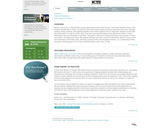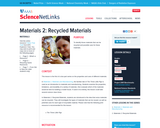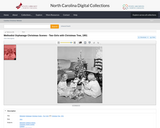
In this resource, students can learn about maritime issues during the 19th Century in the United States.
- Subject:
- Social Studies
- Material Type:
- Lesson
- Provider:
- Smithsonian Institution
- Author:
- Smithsonian National Museum
- Date Added:
- 02/26/2019

In this resource, students can learn about maritime issues during the 19th Century in the United States.

This resource provides basic information to help students evaluate the quality of the Martin Luther King, Jr. Memorial.

In this lesson students identify with Dr. King through reading, writing, listening, and speaking activities that provide a glimpse into Dr. King's life. Students record what they know about Dr. King on a KWL chart. They then read aloud the picture book My Brother Martin: A Sister Remembers and add information to the KWL. Throughout the week, they explore websites and other sources of information about Dr. King, record new information on the KWL chart, and keep a journal of their own thoughts and ideas. As a culminating activity, they plan a birthday party for Dr. King to celebrate is birthday.

Students are introduced to the idea that some materials can be recycled. They will investigate the types of materials that can be reused, as well as potential uses for each type of recyclable material.

In this lesson, students read primary and secondary source documents about the McCulloch v. Maryland Supreme Court case on the necessary and proper clause. Students then answer an advanced placement style document based question. There is a teacher answer key at the end of the lesson.

Students apply historical information to math problems to gain an understanding of the flag's size. This activity is included in the online exhibition entitled The Star-Spangled Banner: The Flag that Inspired the National Anthem.

Students will take a trip to a community meeting and think about the experience with suggested questions. This is designed to work with the League of Women's Voters but can adapted to work with other community groups.

In this lesson, students will become familiar with recognizing the different occupations, and their roles, within the community.

Students discover how children celebrated Christmas in the 1950s in North Carolina.

Students will view Pistoletto's "Mirror Architecture" and consider why an artist might choose a fractured mirror to create a work of art; how the surroundings and the viewer interact with the sculpture; and how our perceptions of the piece might change in different locations. Students will write a story with the mirror as the central subject. Students will also write a short story which explores the symbolism of mirrors.

Students can view a mini page insert which addresses the relationship between the Federal and State governments. These were articles created specifically for elementary students and were published in 1987.

Students can view a mini page insert which addresses the changing of the season to Spring. These were articles created specifically for elementary students and were published in 1987.

Students will explore artists' choices of nontraditional art materials; explore how artists use different materials to engage space and will consider the role of the viewer in that process.

Students will be introduced to artworks that emphasize ideas over visual forms and consider how these works fit into or challenge their definitions of art; explore different methods of using language in art; consider the role of artists in making language-based Conceptual art.

Students will be introduced to performance art and will consider its relationship to more traditional forms of visual art, such as painting and sculpture; consider the different ways in which performance art is documented; explore artists' construction of identities in performance and their adoption of signature materials and props.

Students will be introduced to the notion of ephemeral and site-specific art and will consider the role of the photo-documentation of these works; explore works that challenge traditional notions of where art should be displayed; be introduced to artists' strategies of institutional critique.

Students will consider artists' choices related to materials, line, color, and scale; consider artists' motivations for using repeated forms; compare and contrast industrially fabricated works of art with those made by hand.

In this lesson, students read primary and secondary source documents about the Supreme Court case Miranda v. Arizona and the fifth amendment. Students then answer analysis questions about the case. There is a teacher answer key included in the lesson.

The four lessons that compose this guide may be used sequentially or as independent units. An introduction to the key principles of each lesson is followed by a close examination of the works, including historical context and information on the artists. Discussion questions based on the images lead students through analysis of the visual elements of artworks and seek to create connections between information and visual evidence. The activities that conclude each lesson encourage students to synthesize what they have learned about the works and carry the lessons into the broader curriculum or relate it to skills they are practicing in the classroom.

The five lessons that comprise this unit may be used sequentially or as independent lessons. The lessons include an introduction to key principles followed by a close examination of each work, including the work's historical context and information on the architect or artist. Discussion questions based on the image lead students through formal analysis of the artwork, and seek to create connections between information and visual evidence. The activities that conclude each lesson encourage students to synthesize what they have learned about the works, and connect the lesson to the broader curriculum or relate it to skills students are practicing in the classroom.